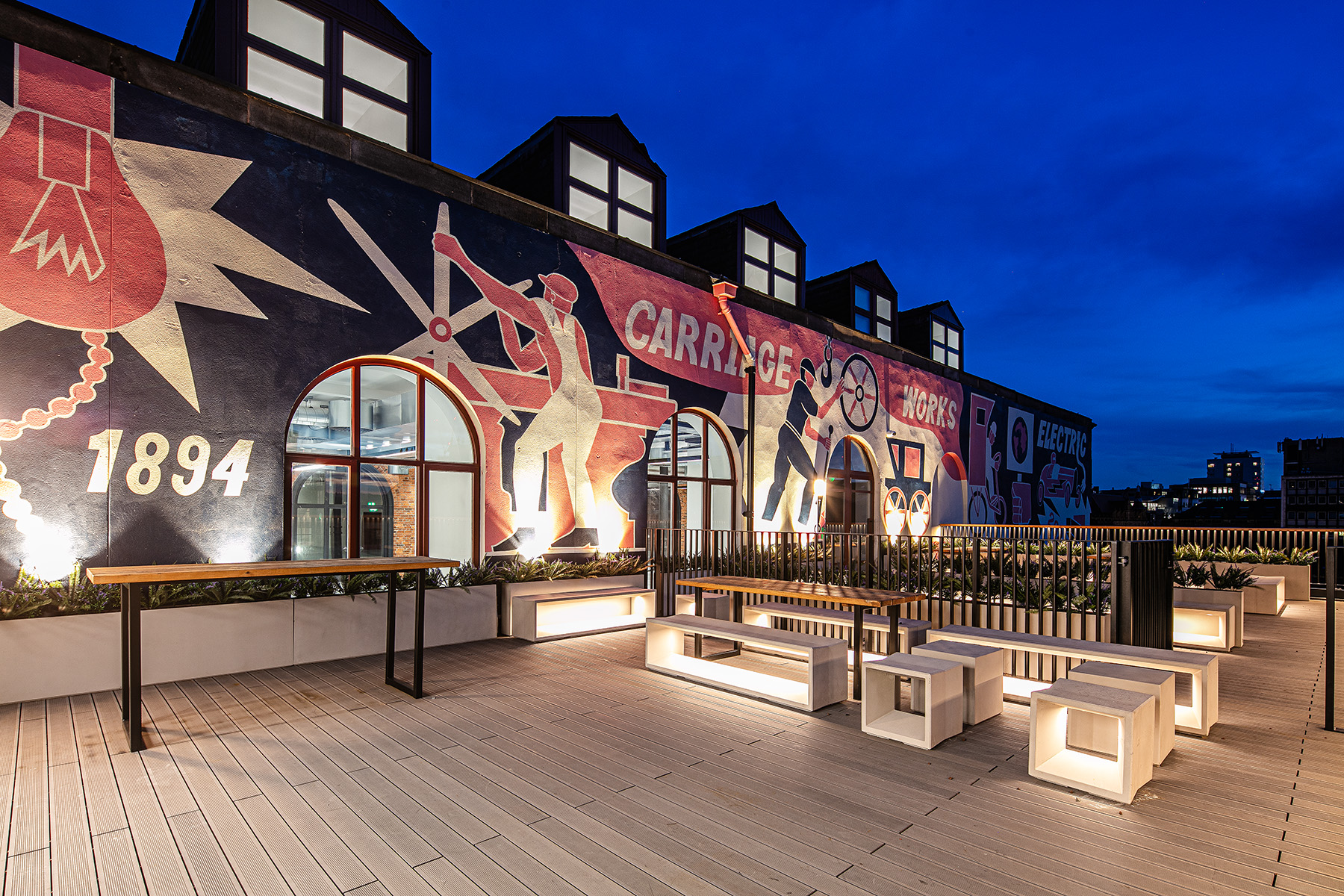
Introduction
Architecture does not just live in the built world – it lives in photographs, portfolios, websites, and magazines. Architectural photography is not about documenting. Anyone can document – my five-year-old could do it with his Paw Patrol camera.
The role of architectural photography is to achieve two things:
- Make the project look outstanding
- Communicate what the architect or developer wanted to achieve
Every building is unique. The purpose and feel of each one will have been considered in depth. It is crucial this is captured and communicated through imagery.
Why Photography Matters to Public Perception
When someone wants to showcase their project, they rely on the photographer. Most people will never visit the building itself. Public perception is shaped almost entirely by the images presented.
A good architectural photograph shows:
- The details that matter
- How the building sits within its surroundings
- Whether it fits harmoniously or stands out intentionally
All of this often needs to be communicated in just a handful of images.
Photography captures mood, scale, atmosphere, and purpose in ways words cannot. But this does not happen by accident. The narrative of the project should be considered before the photographer even sets foot on site.
Think about what drove the design:
- Sustainability?
- Community benefit?
- Creating a luxurious space?
Most projects consider many factors, but there is usually one priority above the others that deserves to be brought to life visually.
I work with clients who have built careers and businesses around these principles – creating sustainable homes, innovative commercial spaces, or luxurious developments. My job is to make sure that comes through in the photography.
Collaboration is Key
For the photography to succeed, the client needs to communicate clearly with the photographer:
- What was the project trying to achieve?
- How will the images be used?
- Who is the intended audience?
An experienced architectural photographer takes this information and uses their skillset to communicate the design through impactful imagery. Framing, timing, and light all influence how a space is understood.
For example:
- Huge windows designed to create openness and freedom should be photographed in the right light and weather.
- A community hub might be best photographed when in use by the community.
- A luxurious project designed for discerning clients should sparkle with carefully considered lighting and detail.
Preparing for the Shoot
To capture the project properly, it needs to be ready:
- A panoramic of a new office block loses impact if it is surrounded by construction vehicles.
- Expansive glazing with breathtaking views falls flat if the foreground is bare earth awaiting landscaping.
Staging is important. Props, styling, and dressing the space should align with the project’s tone. Plastic flowers and generic artwork might work in some settings, but they can also cheapen a carefully designed space. In some cases, leaving a property empty works better.
Poor editing can undo good work. Over-processed images strip out subtlety and texture – crucial elements in architectural design.
Why It Matters to Architects and Clients
How a project is perceived directly affects how it is received. It is not enough to tell people your project is beautiful, sustainable or innovative. Your images need to show it.
When I shoot a project, I spend more time searching for those magic details – the way light hits a surface, the crafted elements that tell a story – than I do capturing the obvious wide shots. Both are important, but it is often the smaller moments that trigger a reaction from the viewer.
I want people to say ‘wow’. That is when a project is being understood in the right way.
There is nothing better than arriving on site and instantly recognising what the client has tried to achieve. It makes the shoot a pleasure and ensures the results work hard for the client.
Ultimately, my goal is to support my clients’ success. If my photography helps them win competitions, land new clients, or secure bigger projects, it benefits both of us. I love hearing about the wins and seeing clients grow.
Final Thoughts
To wrap up: architectural photography is not decoration. It is communication.
My job is not to document but to show the energy, thought and intention behind every project – why it was designed the way it was and why it works for the people who use it.
If you are commissioning photography, make sure you share your vision. Explain what matters to you, how you want your project to be perceived, and the thinking behind it.
That is what helps create images that work as hard as your architecture does.


